The alarming growth of impatience in our country has been mentioned several times during the last several years. It’s not a geographical or class problem; it’s all our problem.
Meant as a joke, a friend talked about wearing his old hockey gear the next time he visited the store protecting himself from the mob of people.
Joke or not, I thought it a good idea.
The gotta have it now mentality, seen every year on Black Friday, is our nature.
That mentality rears its ugly head every time there’s a BREAKING NEWS! story. Most, if not all, lettered networks attack the story like a monkey on a cupcake. When the frenzy is over, there’s nothing left but crumbs.

Quick question: what happens when people who haven't seen that breaking story look to see the cupcake? Nothing because there's no longer a cupcake.
Compare the news feeding frenzy to shopping. So many injuries occurred when the front doors open for a big sale. There, on a pedestal in a golden light, sits the latest thing.

Again. Monkeys. Cupcakes.
What's the solution offsetting these frenzies?
Slow down. Learn the facts or plan a shopping trip not involving people acting like wildebeests galloping along the African plains during a migration.
In many ways, something similar happened when sit-stand desks became the thing that everybody wanted. Nay, needed!
In the buying rush, people jumped on the standing desk bandwagon faster than a monkey on a cupcake.
Unfortunately for them, things didn’t work out as planned.
What happened? Let's take a look.
Standing Without Planning
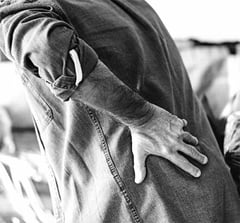
Similar to the examples above, after buying standing desks, people leaped before looking. Instead of slowing down and learning the recommended way to use a height adjustable desk, they eagerly started standing at work to reap its benefits; all day, every day.
After using their new sit to stand desks for a few weeks, people stopped standing because of pain. Why?
Before we get too far describing what went wrong with the standers, let’s take a peek at why adjustable height desks became vogue.
A Bit of History

Use of standing desks reaches back several hundred years.
Shared by plenty of writers in other articles, there are many people famous for standing as they work.
There weren’t many people sitting while working in America around either side of 1900.
Think about it; no need for eight hours a day behind desks working on a spreadsheet, websites, or even something as unorthodox as writing articles on a blog about while sitting at a desk.
Jobs dealing with agriculture, mining, manufacturing, and textile mills meant standing or walking many hours each day.
People exercised without even knowing or caring that they did.
It was what life was like back then.
Progress
As the 20th Century changed, so did all those job categories. Instead of swinging a sledgehammer to break up sidewalks, jackhammers completed the job faster, more efficiently, and with fewer people.
That’s a small example of progress. Taken by itself, it’s no big deal. However, jackhammers weren’t the only thing changing how we worked. Manufacturing cars are the best example to drive the point home.
After Henry Ford perfected his assembly line, that assembly process made its way into whatever industry fitting the same needs.
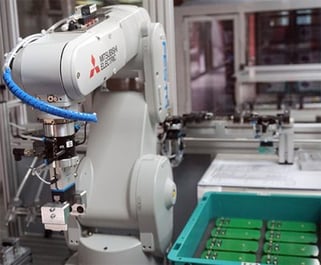
As the various parts traveled along a conveyor, people performed one task attaching one section at a time until the final product rolled out of the factory.
Compare those methods with today. Watching robotic arms assembling things is more common than people performing that same task.
This evolutionary path transformed our economy and forever changed how we work.
Sitting a Long Time
Jobs requiring physical effort changed into those jobs that didn’t. Eventually, employment opportunities for the manual labor segment dwindled while the number of office jobs grew.
Chairs: a New Silent Killer
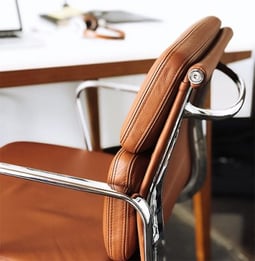
After decades of sitting, scientists examined the implications of prolonged desk work.
Writing at Scientific American, James Levine, M.D. shares some ghastly statistics. (Emphasis added)
In 2010, the journal Circulation published an investigation following 8,800 adults for seven years. Those who sat for more than four hours a day while watching television had a 46 percent increase in deaths from any cause when compared with people who sat in front of the tube for less than two hours.
Other researchers have found that sitting for more than half the day, approximately, doubles the risk of diabetes and cardiovascular problems.
Overall, when you combine all causes of death and compare any group of sitters with those who are more active, sitters have a 50 percent greater likelihood of dying.
As time passed, statistics showed increasing rates of obesity, arthritis, heart disease, and heart disease. Dr. Levine said the increased illnesses were associated with overeating. However, he said, nobody considered how long people were sitting.
Magic Underwear
Dr. Levine studied evidence of the benefits of just standing and walking. One study used spandex underwear loaded with sensors that test subjects wore for ten days. They tested people in agricultural communities and cities. The results were pretty definitive.
We asked villagers living around a banana plantation in Jamaica, city dwellers in the island's capital, Kingston, and urbanites in the U.S. to wear the togs for ten days.
Among our findings: People who live in rural areas in Jamaica walk twice as much as even lean people living in Kingston and modern cities in the U.S. Those in agricultural communities sit for only three hours a day, whereas office workers can sit for 15 hours a day.
Because of this increased activity, as we noted in a 2011 summary of this research in Urban Studies, agricultural work burns 2,000 calories more a day than many office jobs.
Standing Desk Feeding Frenzy
When studies like Dr. Levine’s became available, the frenzy to change to standing desks began. Think monkeys on cupcakes again.
That frenzy led to the growth of a new industry: manufacturing adjustable height desks. Desk manufacturers offered a variety of desks to choose. However, the rush to stand led to some frustrated people.
The Circle is Complete
As previously mentioned, people started standing all day while working! After several days using standing desks, however, complaints regarding lower back pain, leg and ankle pain, and swelling became common.

The human body adapts to everything on earth. Arctic, tropical, seasonal, doesn’t matter. Communities exist in extreme conditions on six continents. (I’m not counting the military bases on Antarctica.)
Adaptation is a process that takes time. Take, for example, the boiling frog metaphor:
If you plunge a frog into boiling water, it will immediately jump out. But if you place the frog into cool water and slowly heat it to boiling, the frog won’t notice and will slowly cook to death.
When we allow ourselves time to adapt, we become the frog-minus being boiled alive of course.
Ask yourself: if you decide to get yourself in shape, do you lift the heaviest weights or run long distances the first morning of your workout? No, of course not. Starting slowly, and safely, your body adapts to your new routine.
Changing your routine regarding standing at work is the same thing. When you begin using your sit to stand desk, start slowly. Stand for 15 minutes in the morning and the same in the afternoon that first day. As time passes, increase your standing time.
The benefits of standing at work aren't immediately apparent. Year-long studies by several entities logged some impressive statistics.
By slowly building stamina, scientists determined that a person burns around 50 calories per hour.
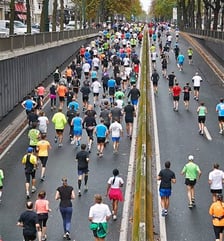
Big deal, right?
But, if that happens every workday for a year, standing three hours each workday burns about 30,000 extra calories. Putting it another way, that’s approximately 8 pounds of fat.
Sounds cool, but comparing those results with other activity levels equals something that surprised me. Just by standing three or four hours each workday for a year equals the same amount after running about ten marathons each year!
Do Your Due Diligence
Before investing in a standing desk, ask yourself these two questions:
Is an adjustable height desk the right fit for you?
- Consider these variables: do you have the room for a desk, electric or manual, keyboard tray or not, or does it fit under your budget?
- Many articles describe these variables, so there's no need to explain them here.
Do you need a standing desk?
- Height adjustable desks are expensive and take time to get used to using. Instead of standing four hours each day, do you get the same benefit from taking regularly scheduled breaks from sitting?
The benefits of an adjustable height desk outweigh the drawbacks. Take as much time as needed researching the myriad of choices available.
This decision isn't as simple as deciding to buy a pencil tray. Make sure you treat it like the important decision it is.
In Sum
The proverb, “patience is a virtue” is what's missing in America. Instead of waiting patiently for food in a restaurant, people demand rapid service to receive instant gratification.
By slowing working into a routine while using a sit-to-stand desk, combine sitting and standing, you’ll end up reaping some cool benefits.
So, instead of watching troops of monkeys inflicting terminal damage to pastries, you’ll earn the privilege of enjoying each bite of your cupcake.

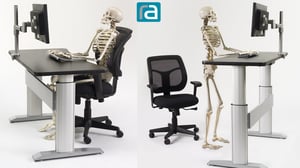
COMMENTS